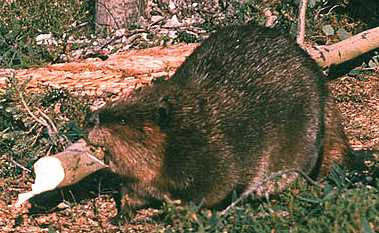
Beaver.
| Animals: The diversity of plant life in the American Bottom supported an equally abundant and diverse animal population. Of particular importance to Native Americans were species living in or near water including fish, aquatic turtles, freshwater mussels, beaver, muskrat, and waterfowl. The biological productivity of the American Bottom wetlands astounded early Euroamerican visitors who noted that it was common to take cartloads of fish from shallow ponds after floodwaters receded (Flint 1828). |

Beaver. |